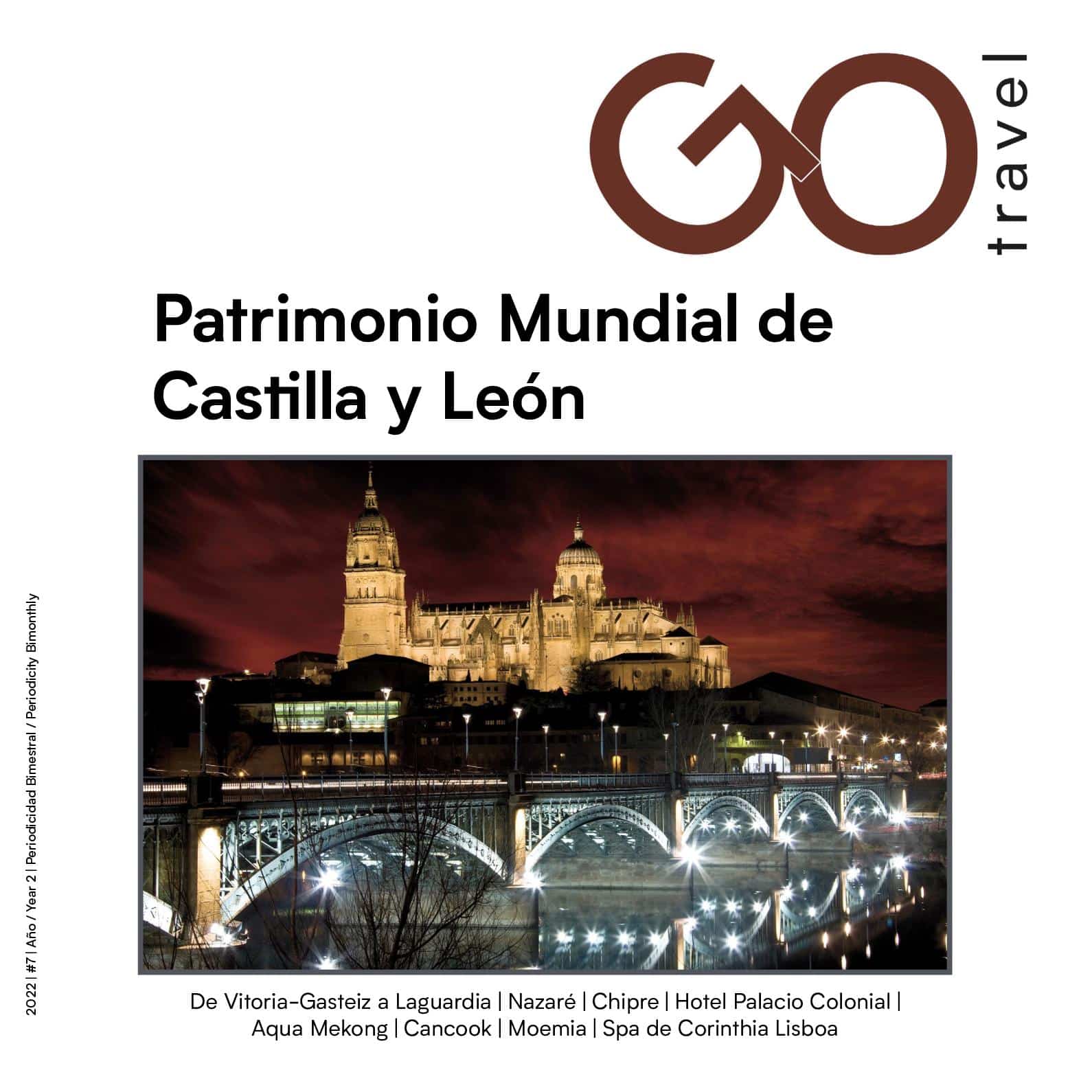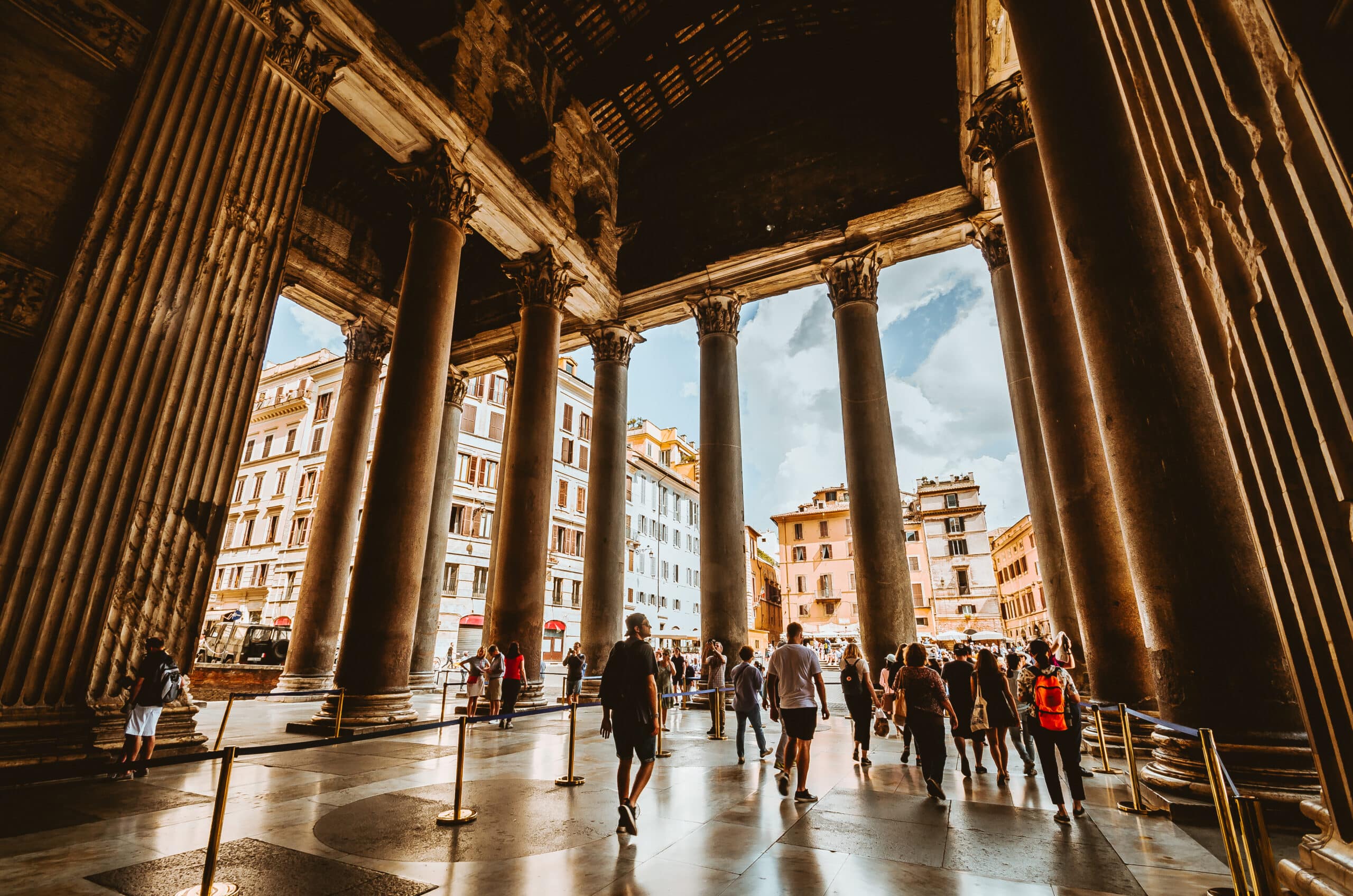Puente de la Exposición, or the Exhibition Bridge, is a breathtaking landmark that spans the Turia River in Valencia, Spain. Completed in 2000, this cable-stayed bridge is a modern marvel of engineering and design, and has quickly become one of the city’s most iconic structures. With its sleek lines, towering pillars, and stunning lighting effects, Puente de la Exposición is a must-visit destination for anyone interested in architecture and urban design. In this article, we’ll take a closer look at the history and features of this magnificent bridge, and explore why it has become such an important part of Valencia’s landscape.
Discover the Wonders of Puente de la Exposición: An Iconic Symbol of Beauty and History.
The Puente de la Exposición is a magnificent bridge that spans across the Turia River in Valencia, Spain. It is a remarkable landmark that stands tall and proud, serving as a symbol of beauty and history for the city. This iconic bridge has captured the hearts of many visitors, and it remains one of the most fascinating attractions in Valencia.
The Puente de la Exposición was built in 1909 and was designed by the famous architect Francisco Mora Berenguer. It was originally constructed as a temporary structure for the Valencia Exhibition of 1909, which was held to celebrate the centennial of the Spanish Constitution. However, the bridge was so popular that it was later made permanent, and it has remained a significant part of Valencia’s landscape ever since.
The Puente de la Exposición is an incredible feat of engineering, and its design incorporates a range of styles, including Gothic, Renaissance, and Baroque. The bridge is made of concrete and stone and is decorated with ornate sculptures and intricate carvings. Its arches and pillars are adorned with stunning reliefs that depict scenes from Valencia’s history, making it a true work of art.
One of the most striking features of the Puente de la Exposición is its central tower. The tower is 60 meters high and has a viewing platform that offers breathtaking views of the city. Visitors can climb to the top of the tower and marvel at the stunning panoramic views of Valencia’s skyline, including the City of Arts and Sciences and the Turia Gardens.
The Puente de la Exposición is not just a beautiful structure; it also has a rich history. During the Spanish Civil War, the bridge was severely damaged and was closed to the public for many years. However, in the 1990s, the bridge underwent extensive restoration work, and it was reopened to the public in 1998. Today, the Puente de la Exposición is a testament to Valencia’s resilience and determination to preserve its cultural heritage.
If you are visiting Valencia, the Puente de la Exposición is a must-see attraction. Its beauty and history make it a unique and unforgettable experience. Whether you are exploring the city on foot or by bike, make sure to take a moment to appreciate this iconic symbol of Valencia’s rich cultural heritage.
Uncovering the Origins: A Journey through the Historical Roots of the Iconic Bridge
The iconic bridge that stands tall and proud today has a rich history that dates back centuries. It has been a symbol of engineering marvel, cultural significance, and historical importance. Uncovering the origins of the bridge takes us on a journey through time, exploring the roots of its design, construction, and evolution.
The Design: The design of the bridge can be traced back to the ancient civilizations of Egypt, Greece, and Rome. The concept of building a bridge that could span a large body of water was not new, but the engineering techniques used to achieve this feat were revolutionary. The first bridges were built using simple wooden beams or stone slabs, but as technology advanced, engineers began to experiment with other materials, such as iron and steel.
The Construction: The construction of the bridge was a massive undertaking that required the skills and expertise of many different trades. From the architects who designed the structure to the laborers who built it, every person played a vital role in the construction process. The bridge was built section by section, with each piece carefully crafted to fit together seamlessly.
The Evolution: The bridge has undergone several changes over the years, adapting to the changing needs of society. It has been widened, strengthened, and renovated to keep up with the demands of modern transportation. Despite these changes, the bridge has managed to retain its historical significance and cultural importance.
The journey through the historical roots of the iconic bridge is a fascinating one, filled with stories of innovation, perseverance, and ingenuity. It is a testament to the creativity and determination of humankind, and a reminder of the importance of preserving our cultural heritage.
sight into the Design Elements that Enhance a Building’s Beauty and Functionality
When it comes to designing a building, there are certain elements that can make all the difference in the final outcome. These design elements not only enhance the beauty of the building but also its functionality. In this article, we will take a closer look at some of these elements that can transform a simple structure into a work of art.
Color Scheme:
The color scheme of a building can have a significant impact on its overall look and feel. It is essential to choose colors that complement each other and match the purpose of the building. For example, a hospital may use calming colors, while a restaurant may use vibrant colors to create a lively atmosphere. The right color scheme can make a building stand out and leave a lasting impression on anyone who sees it.
Texture:
The texture of a building can also add depth and interest to its appearance. Whether it is smooth or rough, matte or glossy, the texture can create a unique visual effect. It can also affect the functionality of the building. For example, a rough texture may be ideal for a structure built in an area with high winds, as it can help to reduce the impact of the wind on the building’s surface.
Lighting:
The lighting of a building can create a dramatic effect and draw attention to its key features. It can also enhance the functionality of a building by providing adequate illumination for different purposes. For example, a museum may use different lighting techniques to highlight specific artworks, while a shopping mall may have bright lighting to create a welcoming atmosphere. The right lighting can make a building look stunning both during the day and at night.
Materials:
The materials used in the construction of a building can significantly impact its overall appearance and functionality. From wood to stone, glass to metal, the right combination of materials can create a unique look and feel. The materials can also affect the durability and sustainability of the building. For example, using eco-friendly materials such as bamboo can reduce the carbon footprint of the building and make it more environmentally friendly.
Proportion and Scale:
The proportion and scale of a building can make a significant difference in how it is perceived. By using the right proportion and scale, a building can look balanced and harmonious. It can also create a sense of grandeur or intimacy, depending on the purpose of the building. For example, a cathedral may have a towering scale to inspire awe, while a cozy cafe may have a more intimate scale to create a welcoming atmosphere.
In conclusion, designing a building is not just about creating a functional structure. It is about creating an aesthetically pleasing and visually stimulating environment that can enhance the quality of life of those who use it.
com/wp-content/uploads/photo-1616323608520-6a7580984a09-scaled.jpg” title=”Discover the Stunning Architecture of Puente de la Exposición – A Must-Visit Landmark!” alt=”Discover the Stunning Architecture of Puente de la Exposición – A Must-Visit Landmark!”>
By using the right combination of color, texture, lighting, materials, proportion, and scale, a building can become a work of art that can be admired for years to come.
Uncovering the Ingenious Design of Puente de la Exposición – A Comprehensive Exploration
Puente de la Exposición is a bridge in Valencia, Spain, that connects the city’s southern districts to the center. Designed by Valencian architect Santiago Calatrava, it is a stunning example of modern engineering and design. In this article, we will explore the bridge’s unique features and uncover the ingenious design that makes it a marvel of engineering.
One of the most striking aspects of Puente de la Exposición is its asymmetrical design. The bridge’s deck is supported by a single pylon that leans towards the city center, giving the bridge a dynamic and fluid appearance. The bold use of asymmetric design is a hallmark of Calatrava’s work and can also be seen in other projects he has designed, such as the Turning Torso building in Sweden.
The pylon that supports the bridge is also a remarkable feat of engineering. It is made of steel and rises to a height of 125 meters, making it one of the tallest structures in Valencia. The pylon is anchored into the ground by a foundation that is 16 meters deep and 35 meters wide, ensuring the stability of the bridge even in the face of strong winds or earthquakes.
Another unique feature of Puente de la Exposición is the use of cables to support the bridge’s deck. The cables are arranged in a fan-like pattern that radiates from the top of the pylon, creating a visually stunning effect. The cables are also designed to be as thin as possible, reducing their visual impact and giving the bridge a lightweight appearance.
The deck of the bridge is made of steel and is supported by a series of arches that connect to the cables. The arches are designed to be as slender as possible, further reinforcing the bridge’s lightweight appearance. The deck is also curved, following the path of the pylon and giving the bridge a sense of flow and movement.
In conclusion, Puente de la Exposición is a testament to the ingenuity and creativity of Santiago Calatrava. Its asymmetrical design, towering pylon, and graceful cables and arches all combine to create a bridge that is both functional and visually stunning. If you’re ever in Valencia, be sure to take a walk across this marvel of modern engineering and design.
Get Ready to Have Fun: Discovering Exciting Activities and Nearby Destinations
Are you tired of doing the same old routine every weekend? It’s time to discover exciting activities and nearby destinations that will fill your weekends with adventure and fun. Whether you’re a thrill-seeker or prefer a more relaxing experience, there’s always something new to try.
If you’re looking for an adrenaline rush, why not try ziplining or skydiving? These activities are sure to get your heart pumping and leave you feeling exhilarated. If you prefer something more grounded, hiking or rock climbing may be more your speed.
For those who want to take things a little easier, there are plenty of options as well. Wine tasting is a relaxing way to spend an afternoon, and you might even discover a new favorite bottle. Museums and art galleries are also great options for those who want to explore culture and history.
When it comes to nearby destinations, there’s no shortage of amazing places to visit. National parks offer stunning natural beauty and the chance to see wildlife up close. Beaches are another popular destination, and many offer activities like surfing or snorkeling.
Don’t forget about local events as well. From festivals to concerts, there’s always something going on in your area. Check your city’s website or social media pages to see what’s coming up.
Now that you have some ideas for exciting activities and nearby destinations, it’s time to start planning your next adventure. Whether you’re going solo, with friends, or family, there’s something for everyone.
Unlock the Secrets of Puente de la Exposición: Top Tips for a Memorable Visit
Are you planning to visit the iconic Puente de la Exposición in Valencia, Spain? If so, you’re in for a treat. This stunning bridge is a masterpiece of engineering and design, and it offers breathtaking views of the city and the Turia Gardens. To make the most of your visit, here are some top tips to unlock the secrets of Puente de la Exposición.
Tip 1: Take a Stroll on the Bridge
The best way to appreciate the beauty of Puente de la Exposición is to walk across it. The bridge is almost half a kilometer long, and it has wide sidewalks on both sides. As you stroll, you’ll see the intricate lattice structure of the arches, the colorful tiles that adorn the pillars, and the panoramic vistas of Valencia that unfold before you.
Tip 2: Visit at Sunset or Nighttime
The bridge looks stunning at any time of the day, but it’s particularly magical at sunset or nighttime. As the sun dips below the horizon, the sky turns a warm orange and pink hue, and the lights of the city start to twinkle. If you visit after dark, you’ll see the bridge illuminated in a rainbow of colors, which creates a surreal and romantic atmosphere.
Tip 3: Explore the Turia Gardens
Puente de la Exposición is part of the Turia Gardens, a vast park that stretches along the old riverbed of the Turia River. The gardens offer many attractions, such as fountains, playgrounds, sports facilities, and cultural centers. You can rent a bike, take a picnic, or simply stroll and admire the greenery.
Tip 4: Learn about the History of the Bridge
Puente de la Exposición was built in 1909 for the Regional Exhibition of Valencia, which celebrated the economic and cultural achievements of the region. The bridge was designed by the architect Francisco Mora, who drew inspiration from the Art Nouveau and Modernist styles. It was originally called “Puente de las Flores” (Bridge of Flowers) because of the floral motifs that adorned it. Later, it was renamed to honor the exhibition.
Tip 5: Take Photos from Different Angles
Puente de la Exposición is a photogenic landmark that offers many opportunities for creative photography. You can take a classic shot from the middle of the bridge, or you can experiment with different angles and perspectives. For example, you can shoot from the side of the bridge, from the bottom of the arches, or from the top of the pillars. Don’t forget to capture the reflections on the water, too.
Tip 6: Admire the Street Art
If you’re a fan of street art, you’ll love the murals that decorate the walls of the bridge. Many local and international artists have left their mark on Puente de la Exposición, creating a vibrant and eclectic collection of styles and themes. Some of the murals are abstract, while others depict animals, people, or landscapes. You can spend hours exploring the details and meanings of each piece.
With these tips, you’re ready to unlock the secrets of Puente de la Exposición and have a memorable visit. Don’t forget to wear comfortable shoes, bring sunscreen and water, and respect the environment and the other visitors. Enjoy your journey!
As you can see, Puente de la Exposición is a true masterpiece of architecture that cannot be missed.
Its stunning design and impressive history make it a must-visit landmark for anyone who wants to experience the beauty and culture of Valencia.
We hope this article has been informative and has inspired you to visit this incredible structure. Remember to take your time, admire the details, and appreciate the view.
Thank you for reading, and we hope you enjoy your visit to Puente de la Exposición!
Goodbye!





